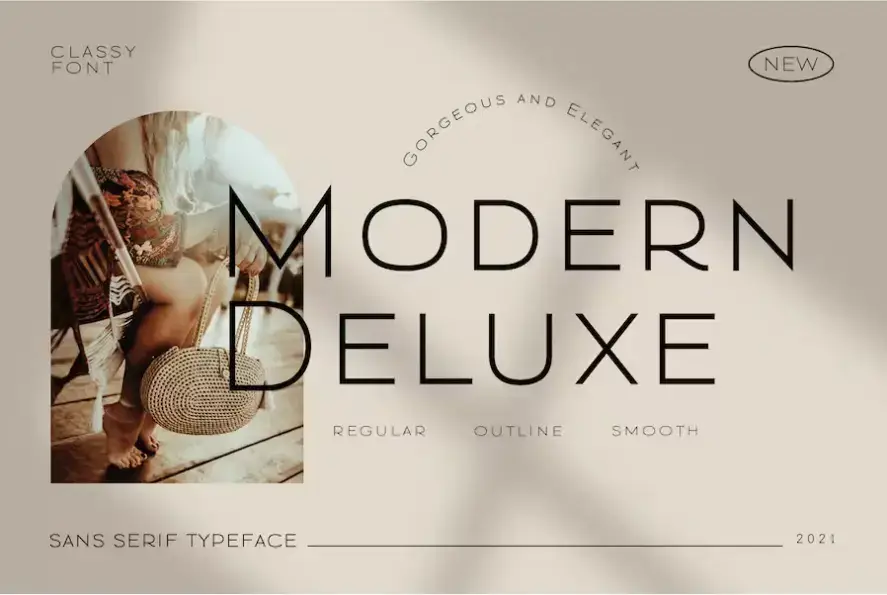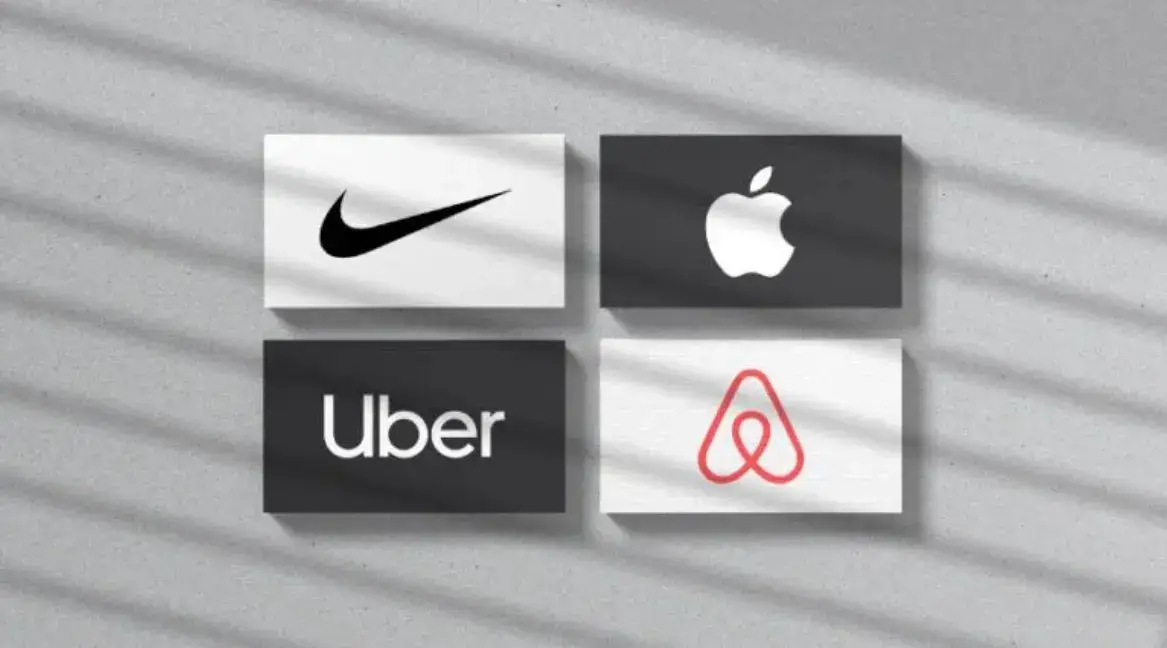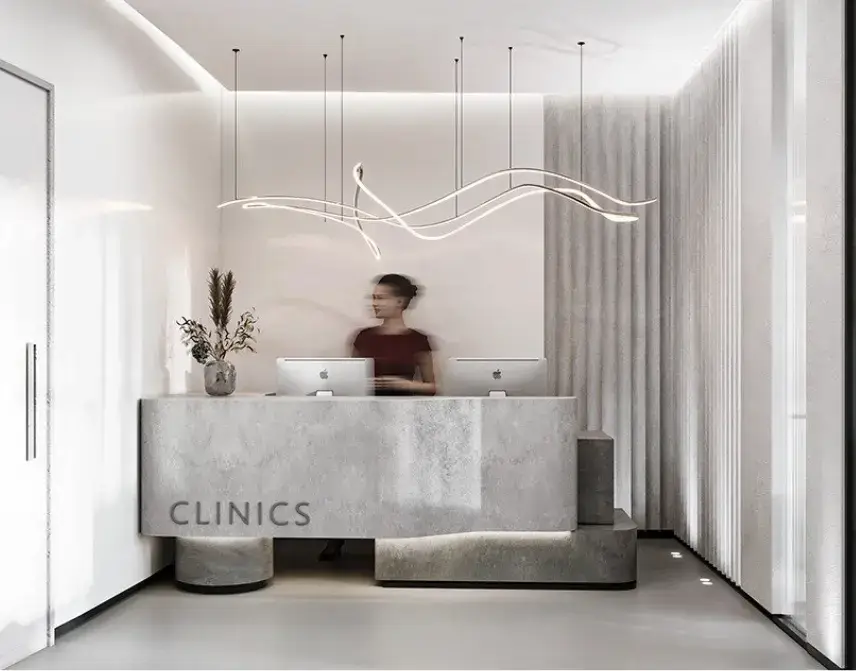In today's competitive wellness industry, luxury medical spa interior design is crucial for shaping client experiences and fostering loyalty.
A well-designed spa enhances its aesthetic appeal and influences how clients perceive its treatments and services. Research shows that a welcoming environment contributes significantly to client satisfaction and retention rates.
Spa owners can invest in thoughtful design elements to create a serene atmosphere that encourages repeat visits and positive word-of-mouth referrals.
As wellness facilities increasingly adopt digital tools for operations and patient engagement, Healthcare IT Consulting plays a critical role in aligning technology with interior design goals—ensuring seamless experiences for both clients and staff.
Examples of Spa Design Ideas
- Natural Light and Greenery: The Spa at the Four Seasons in Beverly Hills utilizes expansive windows and strategically placed plants to create a tranquil, nature-inspired environment. This approach enhances the aesthetic appeal and contributes to a calming atmosphere that helps clients relax.
- Thermal Spa Experiences: Aqua Spa in New York City combines modern design with natural elements. It features thermal baths, steam rooms, and an indoor garden, which not only provides a unique experience but also emphasizes the spa's commitment to holistic wellness.
- Zen-Inspired Spaces: The Healing Hands Spa in San Francisco embraces minimalist design principles with clean lines, soft colors, and natural materials. The intentional use of open spaces and sound-absorbing elements creates a serene environment, enhancing client relaxation during treatments.
In this article:
- Elegant Modern Typography
- Soft Color Palette
- Clean, Minimal Logo Design
- Delicate Refined Pattern
- High-Quality Visual Imagery
- Consistent Visual Elements Across Touchpoints
- Emphasis on Customer Experience
- Thoughtful Packaging and Stationery Design
- Engaging Digital Presence
- Collaborate With Creative Professionals
- Social Media Trends for the Health & Beauty Industry

1. Elegant Modern Typography
Typography is a fundamental aspect of brand design as it sets the tone and personality of the spa. For a beauty spa, consider using elegant, modern fonts that exude sophistication and style.
Opt for clean and legible typefaces with refined curves and contemporary details. Typography should reflect the spa's aesthetic and convey a sense of professionalism and luxury.
Avoid overly decorative or complicated fonts that may hinder readability.

Source: Envato
2. Soft Color Palette
Choosing the right color palette is crucial to creating a visually pleasing brand identity for a beauty spa. Soft and feminine colors often resonate well with the target audience.
Pastel shades like blush pink, lavender, mint green, or light peach can create a calming and soothing atmosphere. These colors evoke relaxation and beauty, commonly associated with a beauty spa.
Incorporating complementary neutral tones, such as ivory or pale gray, can provide balance and elegance to the overall design.

Source: 99designs
3. Clean, Minimal Logo Design
A well-designed logo is the cornerstone of any brand's identity. A clean and minimalistic logo design for a beauty spa can convey professionalism and elegance.
Consider incorporating simple and timeless elements that represent beauty, such as a stylized flower, graceful lines, or a delicate silhouette.
Balancing simplicity with visual impact is critical to creating a memorable logo.
Opt for a versatile design that you can easily apply across various mediums, from signage to digital platforms.

Source: Tailor Brands
4. Delicate Refined Pattern
Incorporating delicate and refined patterns into a brand's design can add a touch of sophistication and uniqueness. These patterns can be used in various applications, such as stationery, packaging, or digital assets.
Consider incorporating subtle floral motifs, elegant lines, or intricate details to enhance the visual appeal and create a sense of luxury.
Use patterns sparingly and strategically to avoid overwhelming the overall design. Focus on creating patterns that complement the spa's aesthetic and evoke a sense of elegance.
5. High-Quality Visual Imagery
Visual imagery plays a vital role in showcasing the services and ambiance of a beauty spa.
High-quality photographs and illustrations can communicate the spa's expertise and professionalism. Professionals often seek insurance for home health care to safeguard their practice and ensure peace of mind.
Invest in professional photography to capture the spa's interior, treatments, and products in the best possible light.
Use images that reflect the desired brand image and create a sense of aspiration for potential clients.
Showcasing Botox forehead before and after transformations, serene spa-like settings, or close-ups of beauty treatments can evoke emotions and attract customers.

Source: Shutterstock
6. Consistent Visual Elements Across Touchpoints
When it comes to brand design, consistency is essential.
Ensure that visual elements, such as the color palette, typography, and logo, remain consistent across all touchpoints, including the spa's website, social media profiles, and marketing materials.
This consistency creates a cohesive brand identity and makes it easier for clients to recognize and remember the spa.
Consistent visual language, from signage to promotional materials, is crucial for brand recognition. To maintain consistency, develop brand guidelines that outline the proper use of visual elements.
7. Emphasis on Customer Experience
The brand design should align with the desired customer experience at the beauty spa.
Consider incorporating design elements that convey a sense of relaxation, tranquility, and luxury.
From the spa's interior design to the visual elements in marketing materials, every touchpoint should evoke a positive emotional response and create a memorable experience for clients.
To create a cohesive brand experience, pay attention to details like texture, lighting, and materials used in the physical space.
You can use Home Designs AI to help you visualize these elements and ensure they align with your brand’s vision, making the design process more efficient and impactful.
Customer experiences extend to things like how you do your billing. As such, you want to ensure that your billing is straightforward and easily digestible by the client.
For health facilities, you may want to leverage tools like cardiology medical billing software to ensure billing accuracy and compliance with industry codes.

8. Thoughtful Packaging and Stationery Design
Packaging and stationery are essential elements of a beauty spa's brand design. The product packaging design should align with the brand identity, using consistent colors, typography, and visual elements.
Thoughtfully designed packaging can elevate the perceived value of the spa's products and create a lasting impression on clients.
Similarly, stationery items like business cards, appointment cards, and letterheads should reflect the spa's brand identity and convey professionalism and attention to detail.
9. Engaging Digital Presence
In today's digital world, a solid online presence is crucial for any small business, including beauty spas.
Investing in professional web design is essential for creating a visually appealing and user-friendly website that enhances client engagement. Many spas in cities like Montreal prioritize high-quality web design to showcase their services, streamline online bookings, and establish a strong digital brand identity.
While design and branding are crucial steps toward creating an inviting space for your clients, developing a robust marketing plan for an aesthetic clinic assures continuous growth and success.
By synergizing distinctive brand designs with strategic marketing efforts, clinics can significantly enhance their market presence and client base.
Click here for more small business tips. To enhance the user experience, focus on creating a user-friendly interface, intuitive navigation, and visually appealing layouts. Incorporate high-quality imagery, informative content, and clear calls to action.
Consistency in design elements, such as color palette and typography, across the website and social media platform, is vital for brand recognition and cohesiveness.

Source: Plink
10. Collaborate With Creative Professionals
Consider collaborating with creative professionals, such as graphic designers or brand strategists and their virtual assistants, who specialize in the beauty industry.
Related article: Top 12 Collaboration Tools for a Startup to Boost Productivity.
They can provide valuable insights and expertise in creating a brand design that aligns with your spa's goals and target audience.
Working with professionals can help you refine your brand identity, ensure visual consistency, and create a unique and impactful visual presence in the market.
11. Social Media Trends for the Health & Beauty Industry
In today's digital age, social media has become an integral part of our lives, influencing how we connect, communicate, and gather information.
In this section:
- Authentic influencer marketing
- Patient empowerment and education
- Health campaigns and awareness
- Telehealth and virtual consultations
- Visual content and storytelling
- Data privacy and ethical considerations
- Health monitoring and wearable technology
The health industry, in particular, has witnessed a significant impact from the rise of social media platforms.
From healthcare organizations and providers to patients and wellness influencers, social media transforms how you share information, conduct health campaigns, and foster patient engagement.
Below we will explore the latest social media trends in the health industry and their potential implications.
-
Authentic influencer marketing
Influencer marketing has become a powerful tool in the health industry. Influencers share personal experiences and wellness tips and promote products or services.
However, there has been a shift towards more authentic influencer marketing. Audiences seek influencers who provide genuine, evidence-based information and are transparent about their partnerships.
In the health industry, influencers prioritizing authenticity and demonstrating expertise are gaining more trust and credibility.

Source: Influencer Impact
-
Patient empowerment and education
Social media platforms have given patients a voice, allowing them to share their health journeys, seek support, and access valuable information.
Patients increasingly turn to social media to learn about their conditions and treatments and connect with others facing similar health challenges.
Healthcare providers and organizations leverage this trend by sharing educational content, hosting live Q&A sessions, and creating patient support communities on social media platforms.
-
Health campaigns and awareness
Social media has become a powerful tool for raising awareness about health issues and promoting health campaigns.
Organizations and public health authorities use social media platforms to spread important messages, encourage behavior change, and drive participation in health initiatives.
Employ hashtags, challenges, and interactive content to engage audiences and create a community around health-related causes.
-
Telehealth and virtual consultations
The COVID-19 pandemic has accelerated the adoption of telehealth and telemedicine services, allowing healthcare providers to deliver virtual consultations and remote care.
Social media platforms have played a significant role in promoting telehealth services, sharing success stories, and educating patients about the benefits of remote healthcare.
As the trend continues, utilize social media platforms to facilitate telehealth appointments, provide resources, and address common questions or concerns.
-
Visual content and storytelling
Visual content, such as images and videos, has proven highly engaging on social media.
In the health industry, visual content is wise for sharing success stories, demonstrating medical procedures, and providing educational content in a more digestible format.
Storytelling through compelling visuals can create an emotional connection and increase the impact of health-related messages.
-
Data privacy and ethical considerations
As social media platforms collect vast amounts of personal data, data privacy and ethical considerations have gained prominence in the health industry.
Healthcare organizations and professionals must navigate the challenges of protecting patient privacy using social media for engagement and education.
Stricter guidelines, secure communication channels, and transparency in data usage are crucial to maintaining patient trust and upholding ethical standards.
-
Health monitoring and wearable technology
Wearable technology, such as fitness trackers and smartwatches, has gained popularity among individuals seeking to monitor their health and fitness.
Social media integration allows users to share their progress, compete with friends, and seek motivation from virtual communities.
The health industry is exploring leveraging social media data from wearable devices to gain insights into population health trends, monitor disease outbreaks, and tailor interventions accordingly.
FAQ
1. What are some key considerations for luxury medical spa interior design?
Luxury medical spa design should create a welcoming and calming environment while prioritizing functionality for medical procedures. High-end finishes, advanced lighting systems, comfortable patient areas, and integration of medical technology are all crucial elements.
2. What are the differences between designing a traditional spa and a luxury medical spa?
While both prioritize relaxation, luxury medical spas require additional considerations. Medical-grade equipment needs to be seamlessly integrated, treatment rooms need to be designed for privacy and functionality alongside comfort, and materials should be chosen to be durable and easy to sanitize.
3. What are some spa design ideas to create a relaxing atmosphere?
- Use natural elements like wood, stone, and water features.
- Implement a calming color palette with soft tones like beige, blue, and green.
- Incorporate soft lighting and aromatherapy diffusers.
- Create designated quiet areas for relaxation.
4. How can I create a luxurious feel in my spa design?
- Use high-quality materials like marble countertops, hardwood floors, and plush furniture.
- Invest in statement lighting fixtures or artwork.
- Offer premium amenities like heated towels, comfortable robes, and high-end bath products [consider linking to a relevant product page].
5. What are some important factors to consider when designing treatment rooms?
- Prioritize privacy with soundproofing and well-designed partitions.
- Ensure ample space for medical equipment and comfortable patient positioning.
- Choose materials that are easy to clean and disinfect.
- Maintain a calming ambiance with adjustable lighting and temperature control.
6. Where can I find more inspiration for spa design ideas?
- Online resources like architecture and design magazines (consider linking to relevant resources).
- Consulting with a professional spa designer [consider mentioning partnering with a design firm specializing in medical spas].
Conclusion
Implementing practical brand design ideas is crucial for creating a memorable and impactful visual identity for a beauty spa.
By focusing on key design elements such as modern typography, soft and feminine colors, and clean and minimalistic logo design, spas can create inviting spaces that resonate with clients and enhance their overall experience.
Creating a strong and distinctive brand identity is essential for a beauty spa to stand out in a competitive market.
The design elements used in branding play a significant role in establishing a memorable and appealing image that resonates with clients.
In this article, we explored the best brand design ideas for a beauty spa, inspiring you to create an impactful visual identity that captures the essence of your spa and attracts clients.
Social media continues to shape the health industry, transforming how healthcare organizations, providers, and patients interact and access information.
Authentic influencer marke

